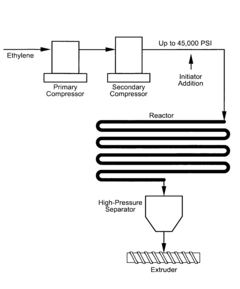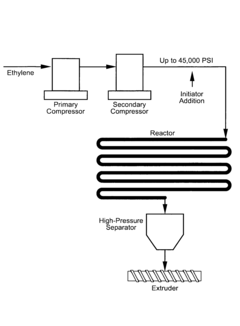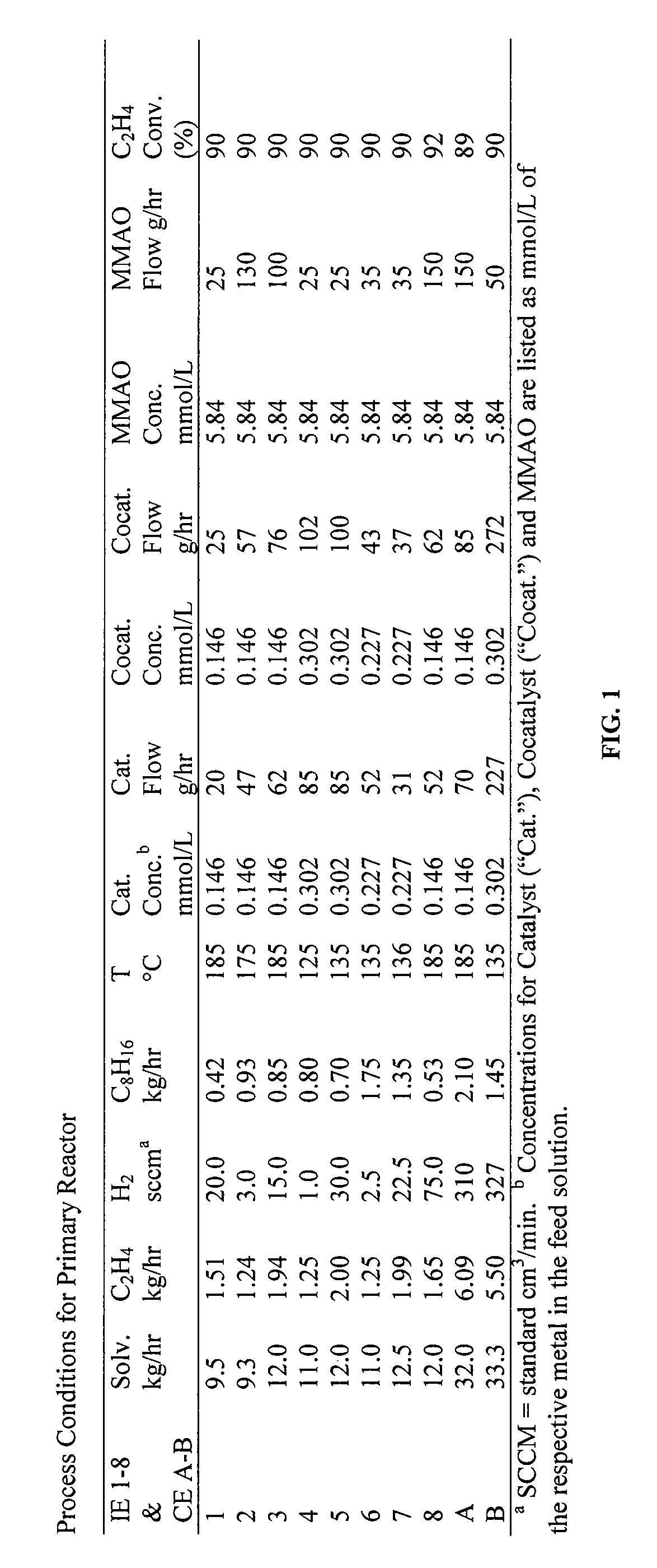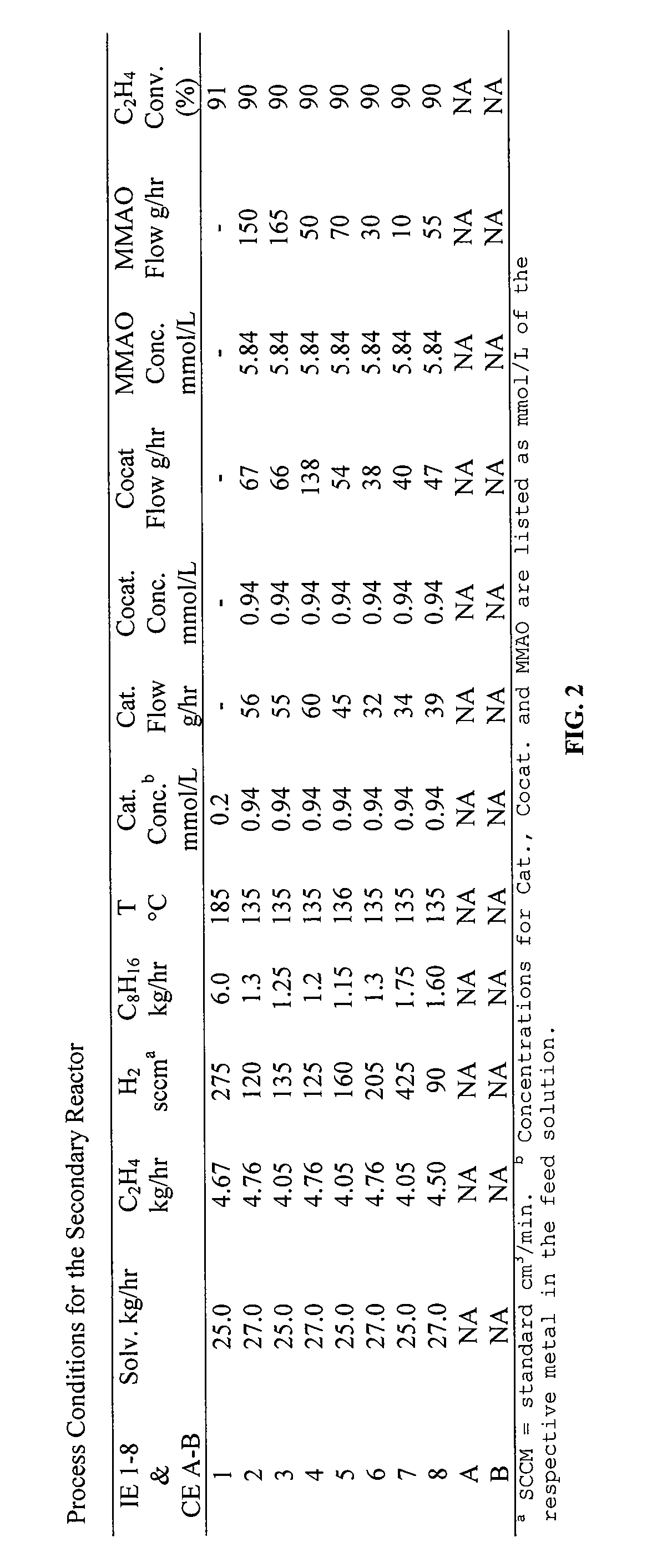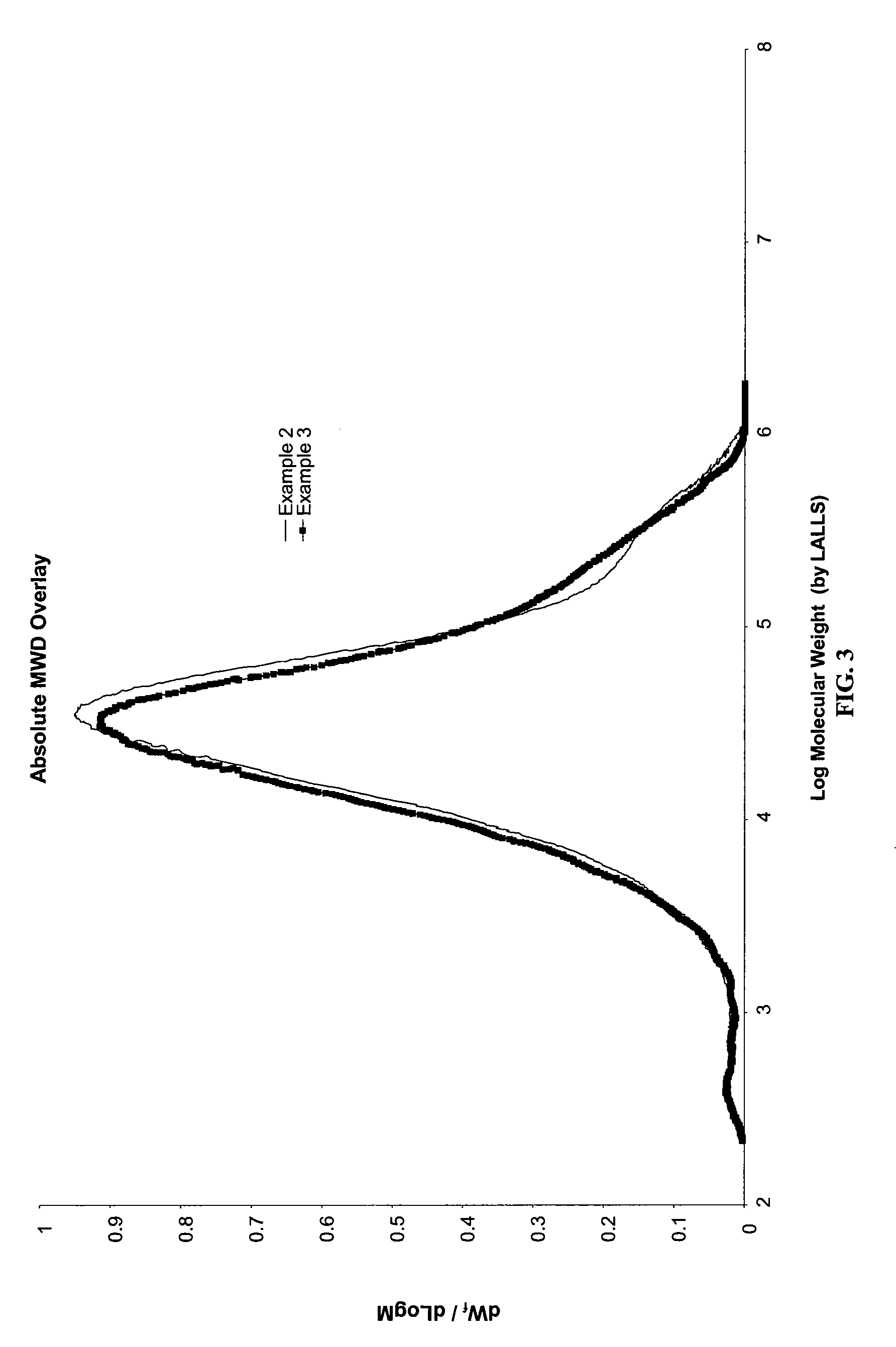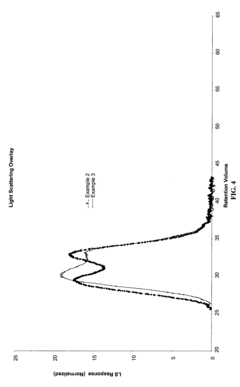How to Advance LDPE Extrusion Techniques?
JUN 30, 20259 MIN READ
Generate Your Research Report Instantly with AI Agent
Patsnap Eureka helps you evaluate technical feasibility & market potential.
LDPE Extrusion Evolution
Low-density polyethylene (LDPE) extrusion techniques have undergone significant evolution since their inception in the 1930s. The journey of LDPE extrusion technology reflects the broader advancements in polymer processing and manufacturing capabilities. Initially, LDPE extrusion was characterized by simple, single-screw extruders with limited control over process parameters and product quality.
The 1950s and 1960s saw the introduction of more sophisticated extruder designs, including improved screw geometries and the development of twin-screw extruders. These innovations allowed for better mixing, increased throughput, and enhanced control over melt temperature and pressure. During this period, the focus was primarily on increasing production capacity and improving the consistency of extruded products.
The 1970s and 1980s marked a significant shift towards process automation and computerization. The integration of electronic controls and sensors enabled real-time monitoring and adjustment of extrusion parameters. This era also witnessed the development of more advanced die designs, allowing for the production of complex profiles and multi-layer structures.
In the 1990s and early 2000s, the emphasis shifted towards energy efficiency and environmental considerations. Extruder manufacturers began incorporating energy-saving features such as improved motor designs and heat recovery systems. Additionally, there was a growing focus on reducing material waste and improving the recyclability of LDPE products.
The past two decades have seen a rapid acceleration in LDPE extrusion technology, driven by advancements in materials science, process modeling, and digital technologies. The introduction of high-performance additives and the development of new LDPE grades have expanded the range of achievable properties and applications. Computational fluid dynamics (CFD) and finite element analysis (FEA) have enabled more precise design of extruder components and die geometries.
Recent years have witnessed the integration of Industry 4.0 concepts into LDPE extrusion processes. Smart sensors, machine learning algorithms, and predictive maintenance systems are being employed to optimize production efficiency and product quality. Advanced process control systems now allow for real-time adjustments based on subtle variations in raw material properties or environmental conditions.
Looking ahead, the evolution of LDPE extrusion techniques is likely to continue along several key trajectories. These include further improvements in energy efficiency, the development of more sustainable production methods, and the integration of advanced materials and nanotechnology. The ongoing trend towards digitalization and automation is expected to lead to fully autonomous extrusion lines capable of self-optimization and adaptive control.
The 1950s and 1960s saw the introduction of more sophisticated extruder designs, including improved screw geometries and the development of twin-screw extruders. These innovations allowed for better mixing, increased throughput, and enhanced control over melt temperature and pressure. During this period, the focus was primarily on increasing production capacity and improving the consistency of extruded products.
The 1970s and 1980s marked a significant shift towards process automation and computerization. The integration of electronic controls and sensors enabled real-time monitoring and adjustment of extrusion parameters. This era also witnessed the development of more advanced die designs, allowing for the production of complex profiles and multi-layer structures.
In the 1990s and early 2000s, the emphasis shifted towards energy efficiency and environmental considerations. Extruder manufacturers began incorporating energy-saving features such as improved motor designs and heat recovery systems. Additionally, there was a growing focus on reducing material waste and improving the recyclability of LDPE products.
The past two decades have seen a rapid acceleration in LDPE extrusion technology, driven by advancements in materials science, process modeling, and digital technologies. The introduction of high-performance additives and the development of new LDPE grades have expanded the range of achievable properties and applications. Computational fluid dynamics (CFD) and finite element analysis (FEA) have enabled more precise design of extruder components and die geometries.
Recent years have witnessed the integration of Industry 4.0 concepts into LDPE extrusion processes. Smart sensors, machine learning algorithms, and predictive maintenance systems are being employed to optimize production efficiency and product quality. Advanced process control systems now allow for real-time adjustments based on subtle variations in raw material properties or environmental conditions.
Looking ahead, the evolution of LDPE extrusion techniques is likely to continue along several key trajectories. These include further improvements in energy efficiency, the development of more sustainable production methods, and the integration of advanced materials and nanotechnology. The ongoing trend towards digitalization and automation is expected to lead to fully autonomous extrusion lines capable of self-optimization and adaptive control.
Market Demand Analysis
The global market for Low-Density Polyethylene (LDPE) extrusion continues to expand, driven by increasing demand across various industries. The packaging sector remains the primary consumer of LDPE extruded products, with flexible packaging for food, beverages, and consumer goods leading the charge. This demand is fueled by the material's excellent moisture barrier properties, flexibility, and cost-effectiveness.
In recent years, there has been a notable shift towards sustainable packaging solutions, prompting LDPE manufacturers to focus on developing more environmentally friendly extrusion techniques. This trend is reflected in the growing market for recycled LDPE and bio-based alternatives, which are gaining traction among environmentally conscious consumers and brands alike.
The construction industry represents another significant market for LDPE extrusion, particularly in the production of geomembranes, pipes, and insulation materials. As global infrastructure development continues, especially in emerging economies, the demand for these LDPE products is expected to rise steadily.
The automotive sector is also contributing to the market growth, with LDPE extruded components being used in vehicle interiors, wire coatings, and fuel systems. The push for lighter, more fuel-efficient vehicles has led to increased adoption of LDPE materials, further driving market demand.
In the agricultural sector, LDPE extrusion techniques are being employed to produce greenhouse films, mulch films, and irrigation systems. The growing emphasis on precision agriculture and crop yield optimization is expected to boost demand for these products in the coming years.
The medical and healthcare industries present a niche but rapidly growing market for LDPE extrusion. The material's biocompatibility and versatility make it suitable for various medical applications, including tubing, packaging for medical devices, and pharmaceutical packaging.
Geographically, Asia-Pacific remains the largest market for LDPE extrusion, driven by robust growth in packaging demand and industrial development in countries like China and India. North America and Europe follow, with mature markets focusing on technological advancements and sustainable solutions.
The market demand for advanced LDPE extrusion techniques is primarily centered around improving efficiency, reducing energy consumption, and enhancing product quality. Manufacturers are seeking solutions that can increase throughput while maintaining or improving the mechanical and optical properties of the extruded products. Additionally, there is a growing interest in techniques that can effectively process recycled LDPE and incorporate bio-based additives without compromising performance.
In recent years, there has been a notable shift towards sustainable packaging solutions, prompting LDPE manufacturers to focus on developing more environmentally friendly extrusion techniques. This trend is reflected in the growing market for recycled LDPE and bio-based alternatives, which are gaining traction among environmentally conscious consumers and brands alike.
The construction industry represents another significant market for LDPE extrusion, particularly in the production of geomembranes, pipes, and insulation materials. As global infrastructure development continues, especially in emerging economies, the demand for these LDPE products is expected to rise steadily.
The automotive sector is also contributing to the market growth, with LDPE extruded components being used in vehicle interiors, wire coatings, and fuel systems. The push for lighter, more fuel-efficient vehicles has led to increased adoption of LDPE materials, further driving market demand.
In the agricultural sector, LDPE extrusion techniques are being employed to produce greenhouse films, mulch films, and irrigation systems. The growing emphasis on precision agriculture and crop yield optimization is expected to boost demand for these products in the coming years.
The medical and healthcare industries present a niche but rapidly growing market for LDPE extrusion. The material's biocompatibility and versatility make it suitable for various medical applications, including tubing, packaging for medical devices, and pharmaceutical packaging.
Geographically, Asia-Pacific remains the largest market for LDPE extrusion, driven by robust growth in packaging demand and industrial development in countries like China and India. North America and Europe follow, with mature markets focusing on technological advancements and sustainable solutions.
The market demand for advanced LDPE extrusion techniques is primarily centered around improving efficiency, reducing energy consumption, and enhancing product quality. Manufacturers are seeking solutions that can increase throughput while maintaining or improving the mechanical and optical properties of the extruded products. Additionally, there is a growing interest in techniques that can effectively process recycled LDPE and incorporate bio-based additives without compromising performance.
Technical Challenges
Low-density polyethylene (LDPE) extrusion techniques face several significant challenges that hinder their advancement. One of the primary issues is the limited control over molecular weight distribution and branching, which directly affects the material's properties and processability. Current extrusion methods struggle to achieve precise control over these parameters, resulting in inconsistent product quality and performance.
Another major challenge is the energy efficiency of the extrusion process. LDPE extrusion typically requires high temperatures and pressures, leading to substantial energy consumption. This not only increases production costs but also contributes to a larger carbon footprint, which is increasingly problematic in today's environmentally conscious market.
The issue of melt fracture remains a persistent problem in LDPE extrusion, particularly at higher production speeds. This phenomenon causes surface defects in the extruded product, limiting the maximum achievable output rates and compromising product quality. Overcoming melt fracture without sacrificing production efficiency is a key challenge for advancing LDPE extrusion techniques.
Die design and optimization present another significant hurdle. Current die designs often struggle to maintain uniform flow distribution across the die, leading to thickness variations in the final product. This challenge becomes more pronounced when dealing with complex product geometries or when attempting to increase production speeds.
The incorporation of additives and fillers into LDPE during extrusion poses additional challenges. Achieving uniform dispersion of these materials throughout the polymer matrix while maintaining the desired properties of the final product is often difficult. This is particularly true for nanoscale additives, which tend to agglomerate and can significantly alter the rheological properties of the melt.
Thermal management during the extrusion process is another critical challenge. Maintaining consistent temperature profiles throughout the extruder and die is essential for product quality but becomes increasingly difficult as production speeds increase. Inadequate thermal management can lead to degradation of the polymer, inconsistent melt viscosity, and variations in product properties.
Lastly, the development of in-line monitoring and control systems for LDPE extrusion processes lags behind industry needs. Real-time measurement and adjustment of critical process parameters such as melt temperature, pressure, and viscosity are essential for maintaining consistent product quality. However, current sensor technologies and control algorithms are often insufficient to provide the level of precision and responsiveness required for advanced LDPE extrusion techniques.
Another major challenge is the energy efficiency of the extrusion process. LDPE extrusion typically requires high temperatures and pressures, leading to substantial energy consumption. This not only increases production costs but also contributes to a larger carbon footprint, which is increasingly problematic in today's environmentally conscious market.
The issue of melt fracture remains a persistent problem in LDPE extrusion, particularly at higher production speeds. This phenomenon causes surface defects in the extruded product, limiting the maximum achievable output rates and compromising product quality. Overcoming melt fracture without sacrificing production efficiency is a key challenge for advancing LDPE extrusion techniques.
Die design and optimization present another significant hurdle. Current die designs often struggle to maintain uniform flow distribution across the die, leading to thickness variations in the final product. This challenge becomes more pronounced when dealing with complex product geometries or when attempting to increase production speeds.
The incorporation of additives and fillers into LDPE during extrusion poses additional challenges. Achieving uniform dispersion of these materials throughout the polymer matrix while maintaining the desired properties of the final product is often difficult. This is particularly true for nanoscale additives, which tend to agglomerate and can significantly alter the rheological properties of the melt.
Thermal management during the extrusion process is another critical challenge. Maintaining consistent temperature profiles throughout the extruder and die is essential for product quality but becomes increasingly difficult as production speeds increase. Inadequate thermal management can lead to degradation of the polymer, inconsistent melt viscosity, and variations in product properties.
Lastly, the development of in-line monitoring and control systems for LDPE extrusion processes lags behind industry needs. Real-time measurement and adjustment of critical process parameters such as melt temperature, pressure, and viscosity are essential for maintaining consistent product quality. However, current sensor technologies and control algorithms are often insufficient to provide the level of precision and responsiveness required for advanced LDPE extrusion techniques.
Current LDPE Solutions
01 Extrusion process optimization
Optimization of LDPE extrusion processes involves adjusting parameters such as temperature, pressure, and screw speed to improve product quality and production efficiency. Advanced control systems and monitoring techniques are employed to maintain consistent extrusion conditions and enhance overall performance.- Temperature control in LDPE extrusion: Precise temperature control is crucial in LDPE extrusion processes. This involves managing the temperature of the extruder barrel, die, and cooling system to ensure optimal melt flow and product quality. Advanced temperature control systems and techniques are employed to maintain consistent temperatures throughout the extrusion process, resulting in improved product uniformity and performance.
- Screw design optimization for LDPE extrusion: The design of the extruder screw plays a critical role in LDPE extrusion. Optimized screw geometries, including variable pitch, depth, and flight configurations, are developed to enhance melting efficiency, homogenization, and output rates. Advanced screw designs may incorporate mixing elements or barrier sections to improve melt quality and processing stability for different LDPE grades.
- Die design and flow optimization: Innovative die designs are crucial for achieving desired LDPE film or sheet properties. This includes developing flow channels, die lips, and adjustable die gaps to ensure uniform melt distribution and thickness control. Computational fluid dynamics (CFD) simulations and experimental techniques are used to optimize die designs for specific LDPE grades and end-product requirements.
- Additives and blends for enhanced LDPE extrusion: The incorporation of additives and blending with other polymers can significantly improve LDPE extrusion performance. This includes the use of processing aids, stabilizers, and compatibilizers to enhance melt flow, thermal stability, and end-product properties. Techniques for effective additive incorporation and polymer blending are developed to achieve desired extrusion characteristics and final product performance.
- Post-extrusion processing and treatment: Various post-extrusion techniques are employed to enhance the properties of LDPE extruded products. These may include controlled cooling strategies, surface treatments, and orientation processes. Advanced post-extrusion methods are developed to improve mechanical properties, barrier characteristics, and overall product performance of LDPE extruded films and sheets.
02 Additive incorporation techniques
Various additives are incorporated into LDPE during extrusion to enhance specific properties. These may include stabilizers, colorants, or performance-enhancing agents. Specialized mixing and dispersion techniques are utilized to ensure uniform distribution of additives throughout the extruded product.Expand Specific Solutions03 Die design and flow control
Advanced die designs and flow control mechanisms are crucial in LDPE extrusion. These innovations help achieve desired product shapes, dimensions, and surface qualities. Techniques such as adjustable die lips and internal flow distributors are employed to optimize melt flow and product consistency.Expand Specific Solutions04 Melt strength enhancement
Techniques to enhance the melt strength of LDPE during extrusion are developed to improve processability and end-product properties. This may involve the use of long-chain branching, specific catalysts, or processing aids to modify the polymer structure and rheological behavior during extrusion.Expand Specific Solutions05 Multilayer and coextrusion techniques
Advanced multilayer and coextrusion techniques are employed in LDPE processing to create products with enhanced properties or functionalities. These methods involve simultaneous extrusion of multiple layers or materials, requiring specialized equipment and process control to ensure proper layer adhesion and thickness uniformity.Expand Specific Solutions
Industry Leaders
The LDPE extrusion techniques market is in a mature stage, with established players and well-developed technologies. However, there's ongoing innovation to improve efficiency and sustainability. The global LDPE market size was valued at approximately $33 billion in 2020, with steady growth projected. Technologically, companies like Dow Global Technologies, ExxonMobil Chemical, and Saudi Basic Industries Corp. are at the forefront, continuously advancing extrusion processes. These industry leaders, along with research institutions like South China University of Technology and Zhejiang University, are focusing on enhancing product quality, reducing energy consumption, and developing more environmentally friendly production methods. The competitive landscape is characterized by a mix of large petrochemical corporations and specialized chemical companies, all striving to innovate in this mature but evolving field.
Dow Global Technologies LLC
Technical Solution: Dow has developed advanced LDPE extrusion techniques focusing on improving film quality and production efficiency. Their approach includes using a novel dual-reactor system that allows for better control of molecular weight distribution and long-chain branching[1]. This system enables the production of LDPE with enhanced mechanical properties and processability. Additionally, Dow has implemented advanced process control systems that utilize machine learning algorithms to optimize extrusion parameters in real-time, resulting in a 15% increase in production rates and a 10% reduction in energy consumption[3].
Strengths: Improved film quality, increased production efficiency, and reduced energy consumption. Weaknesses: Higher initial investment costs and potential complexity in implementation.
ExxonMobil Chemical Patents, Inc.
Technical Solution: ExxonMobil has pioneered a novel LDPE extrusion technique called Exact™ technology. This method utilizes metallocene catalysts to produce LDPE with a more uniform molecular structure, resulting in improved optical properties and enhanced toughness[2]. The company has also developed a proprietary extrusion die design that reduces melt pressure fluctuations, leading to more consistent film thickness and improved overall quality. ExxonMobil's advanced process control system incorporates predictive modeling to optimize extruder screw speed and temperature profiles, resulting in a 20% increase in throughput and a 12% reduction in scrap rates[4].
Strengths: Superior film properties, increased throughput, and reduced waste. Weaknesses: Higher raw material costs and potential limitations in certain applications.
Key Extrusion Patents
Modifying tubular LDPE with free radical initiator
PatentActiveUS8207277B2
Innovation
- Modifying tubular LDPE with a free radical initiator, such as peroxides or azo compounds, to increase its long chain branching index, measured by gel permeation chromatography branching index (gpcBR), to a level similar to autoclave LDPE, by reacting the LDPE with the initiator after discharge from the reactor or during extrusion.
Extrusion Coating Composition
PatentActiveUS20110124254A1
Innovation
- A multimodal polyethylene composition is developed, comprising a high molecular weight component with substantial long chain branching and a low molecular weight component, blended with a low density polyethylene (LDPE) resin, which achieves improved extrusion processability and resistance to draw resonance with less than 20% LDPE by weight, allowing for high line speeds and reduced neck-in.
Material Innovations
Material innovations play a crucial role in advancing LDPE extrusion techniques. Recent developments in polymer science have led to significant improvements in the properties and processability of Low-Density Polyethylene (LDPE) materials, enabling more efficient and versatile extrusion processes.
One of the key areas of innovation is the development of enhanced LDPE grades with improved melt strength and extensibility. These new formulations incorporate long-chain branching and optimized molecular weight distribution, resulting in better bubble stability during film blowing and increased output rates in extrusion coating applications. The incorporation of nano-scale additives, such as silica nanoparticles or carbon nanotubes, has shown promising results in enhancing the mechanical and barrier properties of LDPE films without compromising processability.
Advancements in catalyst technology have also contributed to the production of LDPE with more uniform molecular structures and narrower molecular weight distributions. This leads to improved consistency in extrusion processes and better control over the final product properties. The development of metallocene catalysts, in particular, has enabled the production of LDPE with enhanced optical properties and superior sealing characteristics, expanding its applications in packaging and lamination.
Biodegradable and bio-based alternatives to traditional LDPE are gaining traction in response to environmental concerns. Researchers are exploring blends of LDPE with biodegradable polymers like polylactic acid (PLA) or polyhydroxyalkanoates (PHA) to create materials that maintain the desirable processing characteristics of LDPE while offering improved end-of-life options. These hybrid materials present new challenges and opportunities for extrusion technology adaptation.
The integration of smart materials and functional additives into LDPE formulations is opening up new possibilities for advanced extrusion applications. For instance, the incorporation of phase-change materials or thermochromic pigments allows for the production of LDPE films with temperature-responsive properties, suitable for intelligent packaging solutions. Similarly, the addition of antimicrobial agents or oxygen scavengers can enhance the functionality of LDPE packaging materials, extending shelf life and improving food safety.
Recycling-friendly LDPE formulations are another area of active research, focusing on improving the recyclability and reprocessing capabilities of LDPE products. This includes the development of compatibilizers that enhance the miscibility of recycled LDPE with virgin materials, as well as the design of easily separable multilayer structures for improved recycling efficiency. These innovations not only contribute to sustainability goals but also present new challenges for extrusion process optimization to handle recycled content effectively.
One of the key areas of innovation is the development of enhanced LDPE grades with improved melt strength and extensibility. These new formulations incorporate long-chain branching and optimized molecular weight distribution, resulting in better bubble stability during film blowing and increased output rates in extrusion coating applications. The incorporation of nano-scale additives, such as silica nanoparticles or carbon nanotubes, has shown promising results in enhancing the mechanical and barrier properties of LDPE films without compromising processability.
Advancements in catalyst technology have also contributed to the production of LDPE with more uniform molecular structures and narrower molecular weight distributions. This leads to improved consistency in extrusion processes and better control over the final product properties. The development of metallocene catalysts, in particular, has enabled the production of LDPE with enhanced optical properties and superior sealing characteristics, expanding its applications in packaging and lamination.
Biodegradable and bio-based alternatives to traditional LDPE are gaining traction in response to environmental concerns. Researchers are exploring blends of LDPE with biodegradable polymers like polylactic acid (PLA) or polyhydroxyalkanoates (PHA) to create materials that maintain the desirable processing characteristics of LDPE while offering improved end-of-life options. These hybrid materials present new challenges and opportunities for extrusion technology adaptation.
The integration of smart materials and functional additives into LDPE formulations is opening up new possibilities for advanced extrusion applications. For instance, the incorporation of phase-change materials or thermochromic pigments allows for the production of LDPE films with temperature-responsive properties, suitable for intelligent packaging solutions. Similarly, the addition of antimicrobial agents or oxygen scavengers can enhance the functionality of LDPE packaging materials, extending shelf life and improving food safety.
Recycling-friendly LDPE formulations are another area of active research, focusing on improving the recyclability and reprocessing capabilities of LDPE products. This includes the development of compatibilizers that enhance the miscibility of recycled LDPE with virgin materials, as well as the design of easily separable multilayer structures for improved recycling efficiency. These innovations not only contribute to sustainability goals but also present new challenges for extrusion process optimization to handle recycled content effectively.
Sustainability Factors
Sustainability has become a critical factor in advancing LDPE extrusion techniques. The plastics industry faces increasing pressure to reduce its environmental impact, driving innovation in more sustainable production methods. Energy efficiency is a key focus area, with manufacturers seeking ways to optimize extrusion processes to minimize energy consumption. This includes developing more efficient heating and cooling systems, as well as exploring alternative energy sources for powering extrusion equipment.
Material efficiency is another crucial aspect of sustainability in LDPE extrusion. Techniques are being developed to reduce material waste during the extrusion process, such as improved die designs and process control systems. Additionally, there is a growing emphasis on incorporating recycled LDPE into the extrusion process, which requires advancements in material handling and processing to maintain product quality while using recycled content.
The reduction of volatile organic compound (VOC) emissions is also a significant sustainability concern in LDPE extrusion. Manufacturers are investing in closed-loop systems and advanced filtration technologies to capture and recycle VOCs, minimizing their release into the environment. This not only reduces the environmental impact but also improves workplace safety for extrusion operators.
Water conservation is becoming increasingly important in LDPE extrusion processes. Techniques are being developed to reduce water usage in cooling systems, including the implementation of closed-loop cooling systems and the use of air-cooled alternatives where possible. Some manufacturers are also exploring ways to recycle and reuse process water, further reducing the overall water footprint of LDPE extrusion operations.
The development of bio-based and biodegradable alternatives to traditional LDPE is another area of focus for sustainability in extrusion techniques. While these materials present challenges in terms of processing and performance, ongoing research aims to improve their compatibility with existing extrusion equipment and enhance their properties to match or exceed those of conventional LDPE.
Lifecycle assessment (LCA) is increasingly being applied to LDPE extrusion processes to identify areas for sustainability improvements. This holistic approach considers the environmental impact of the entire production chain, from raw material sourcing to end-of-life disposal. By using LCA data, manufacturers can make informed decisions about process modifications and material choices to minimize the overall environmental footprint of LDPE products.
Material efficiency is another crucial aspect of sustainability in LDPE extrusion. Techniques are being developed to reduce material waste during the extrusion process, such as improved die designs and process control systems. Additionally, there is a growing emphasis on incorporating recycled LDPE into the extrusion process, which requires advancements in material handling and processing to maintain product quality while using recycled content.
The reduction of volatile organic compound (VOC) emissions is also a significant sustainability concern in LDPE extrusion. Manufacturers are investing in closed-loop systems and advanced filtration technologies to capture and recycle VOCs, minimizing their release into the environment. This not only reduces the environmental impact but also improves workplace safety for extrusion operators.
Water conservation is becoming increasingly important in LDPE extrusion processes. Techniques are being developed to reduce water usage in cooling systems, including the implementation of closed-loop cooling systems and the use of air-cooled alternatives where possible. Some manufacturers are also exploring ways to recycle and reuse process water, further reducing the overall water footprint of LDPE extrusion operations.
The development of bio-based and biodegradable alternatives to traditional LDPE is another area of focus for sustainability in extrusion techniques. While these materials present challenges in terms of processing and performance, ongoing research aims to improve their compatibility with existing extrusion equipment and enhance their properties to match or exceed those of conventional LDPE.
Lifecycle assessment (LCA) is increasingly being applied to LDPE extrusion processes to identify areas for sustainability improvements. This holistic approach considers the environmental impact of the entire production chain, from raw material sourcing to end-of-life disposal. By using LCA data, manufacturers can make informed decisions about process modifications and material choices to minimize the overall environmental footprint of LDPE products.
Unlock deeper insights with Patsnap Eureka Quick Research — get a full tech report to explore trends and direct your research. Try now!
Generate Your Research Report Instantly with AI Agent
Supercharge your innovation with Patsnap Eureka AI Agent Platform!
